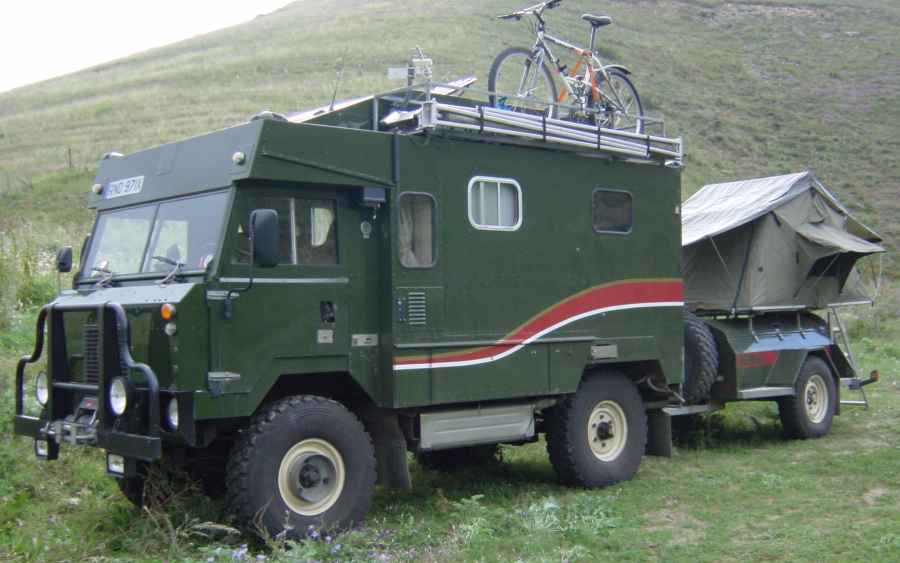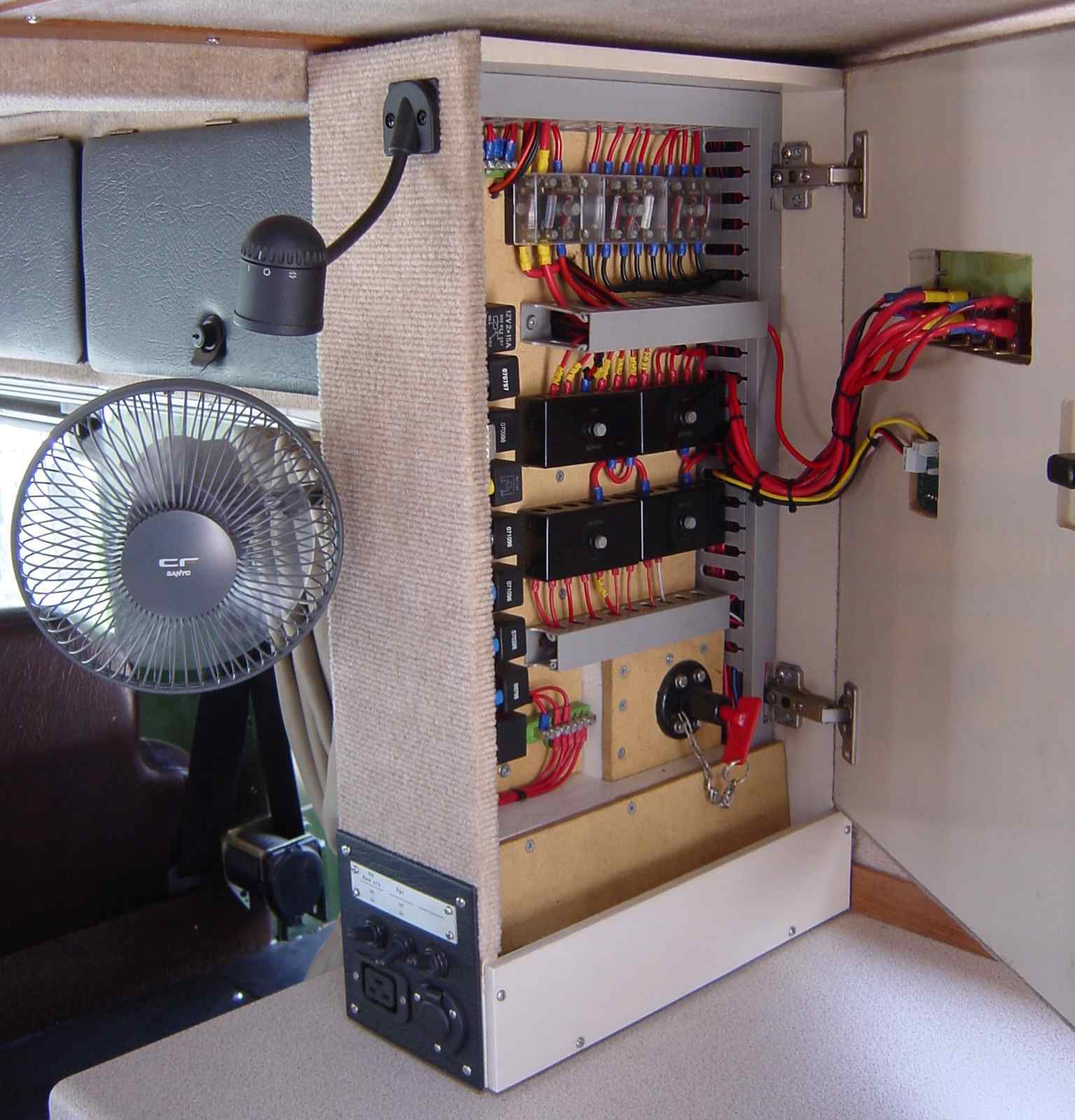|
Vehicle-related electrical items supplied by the domestic batteries include the front fog lamps and air horn compressor. Domestic electrical users include the inverter, cabin heater (diesel fired), cooker (diesel fired, ceramic hob), fridge, water pump, internal lighting (rear and cab), audio system, ventilation fans, DC power points, reversing camera, reversing lamp, rear spot lamp and AC inverter. The winch is also powered from these batteries to protect the vehicle's starting battery.
The domestic batteries have two main connections to the positive 12V terminals: the winch and the feed to the distribution/fuse/relay panel. Both connections have separate isolators.
|



